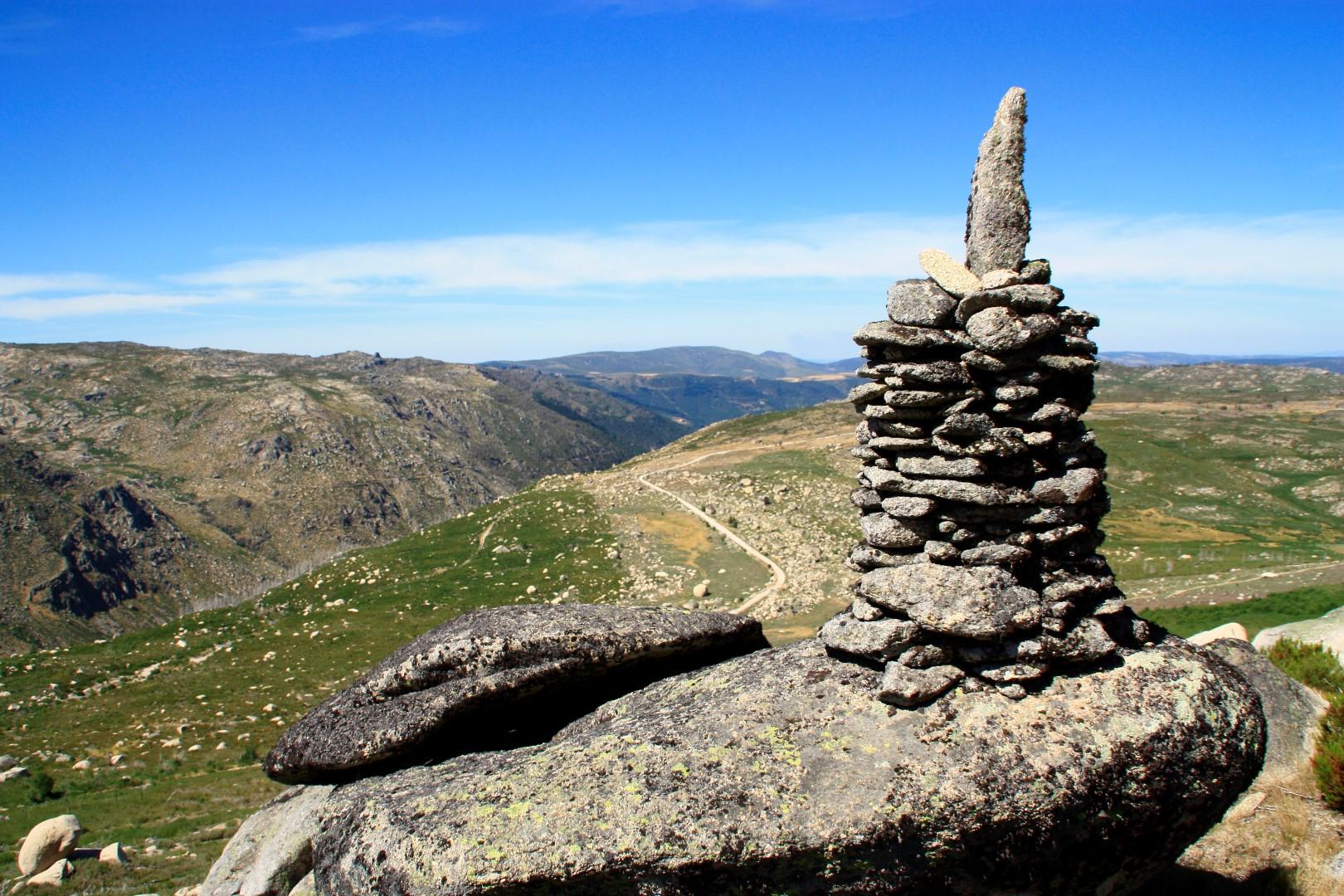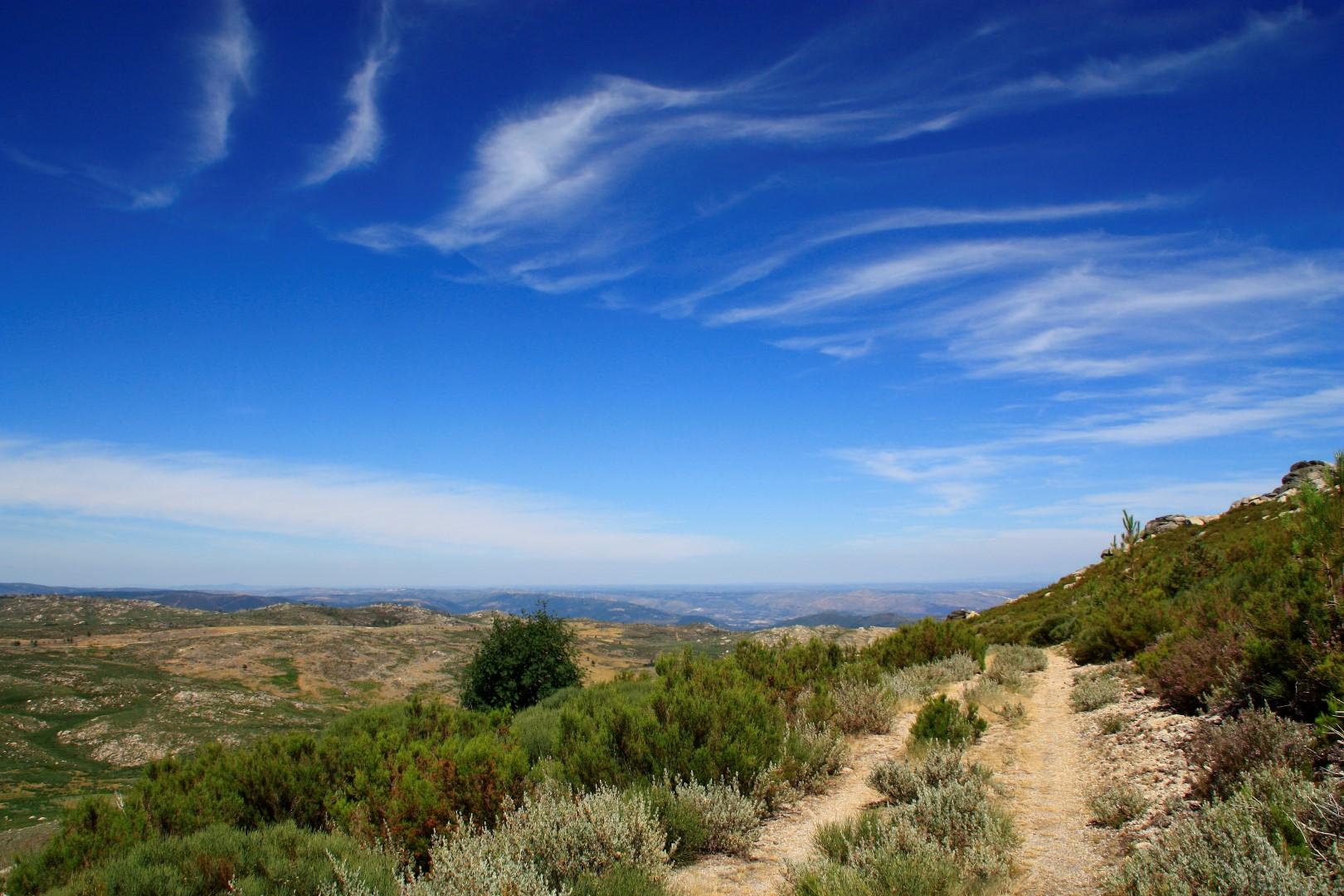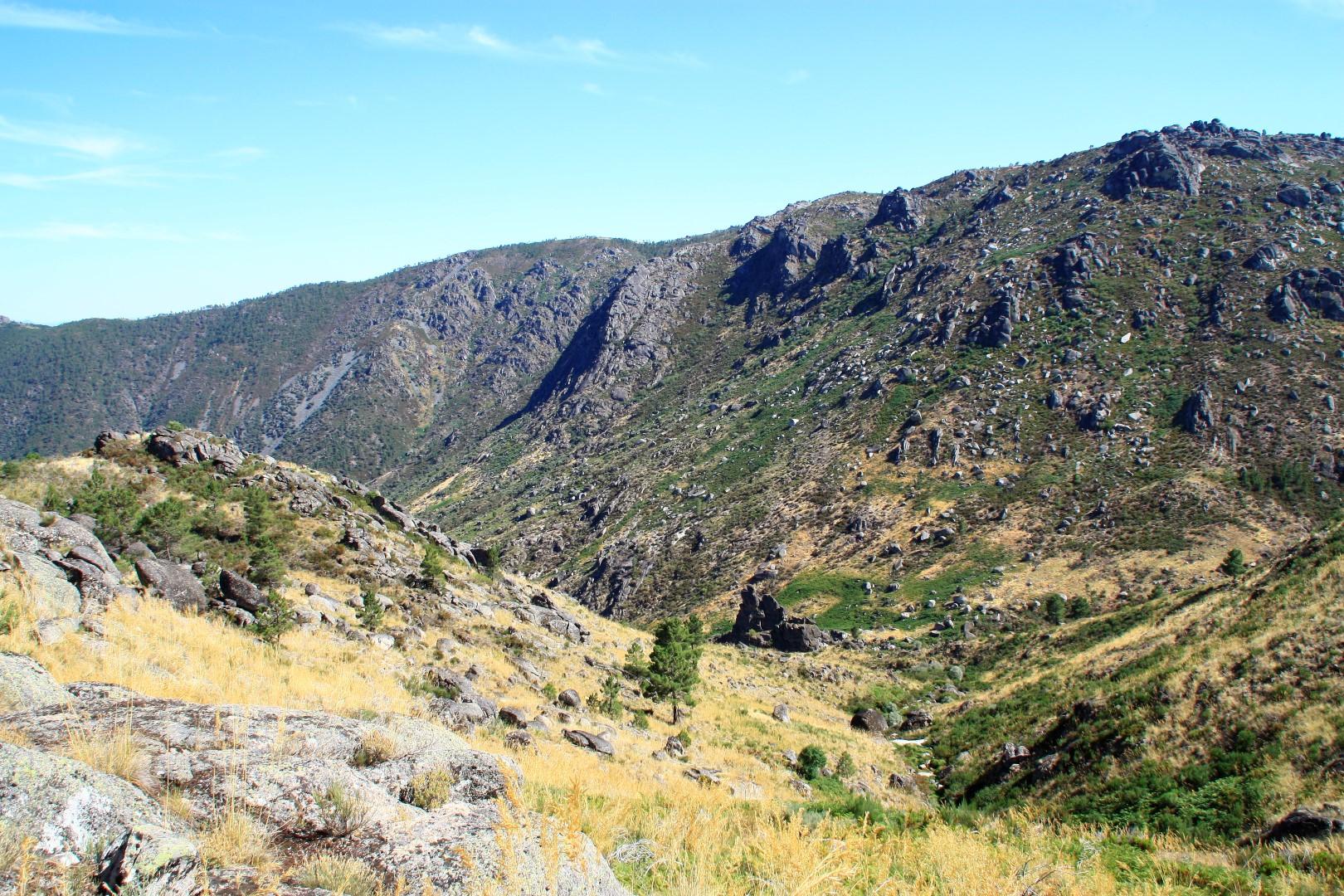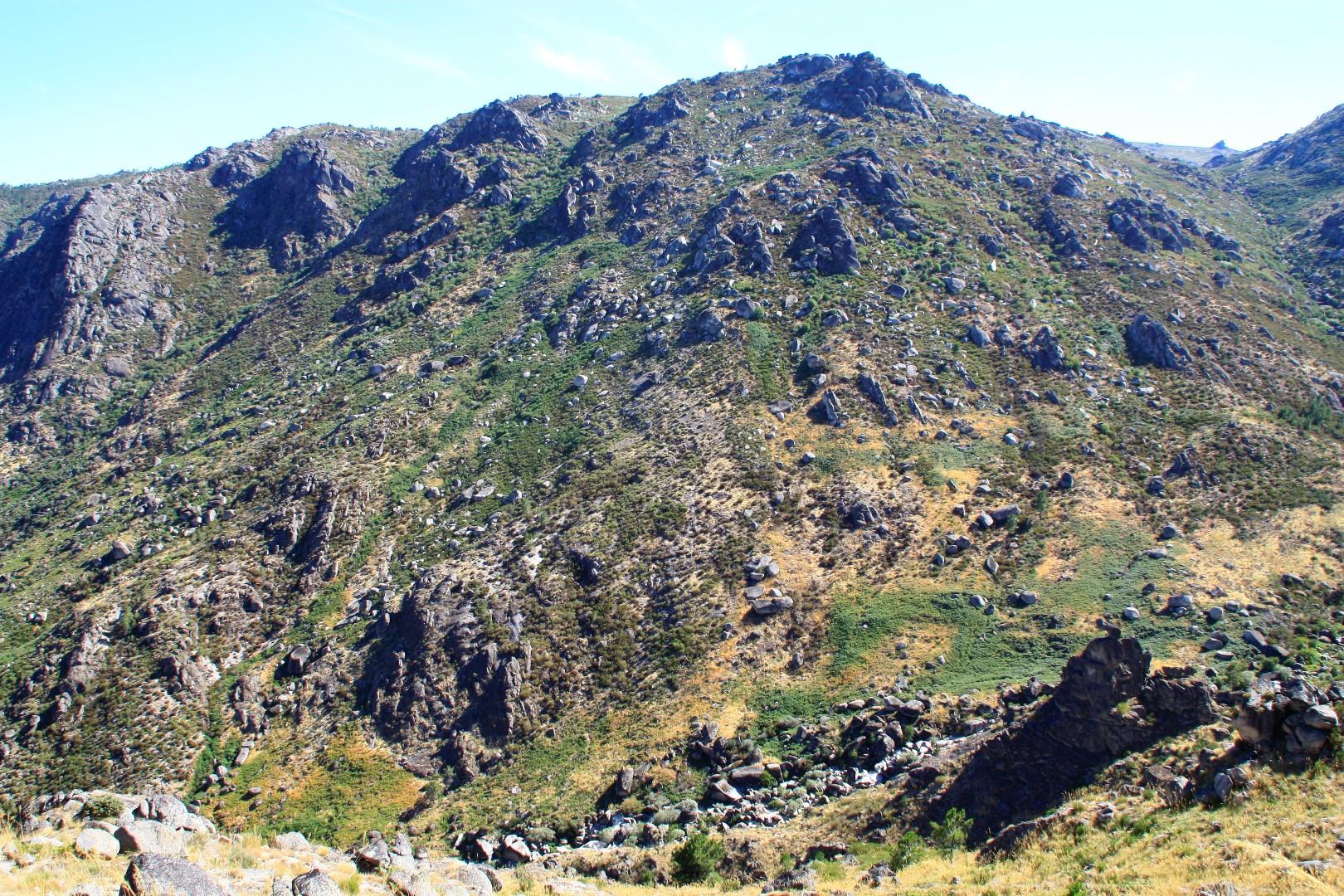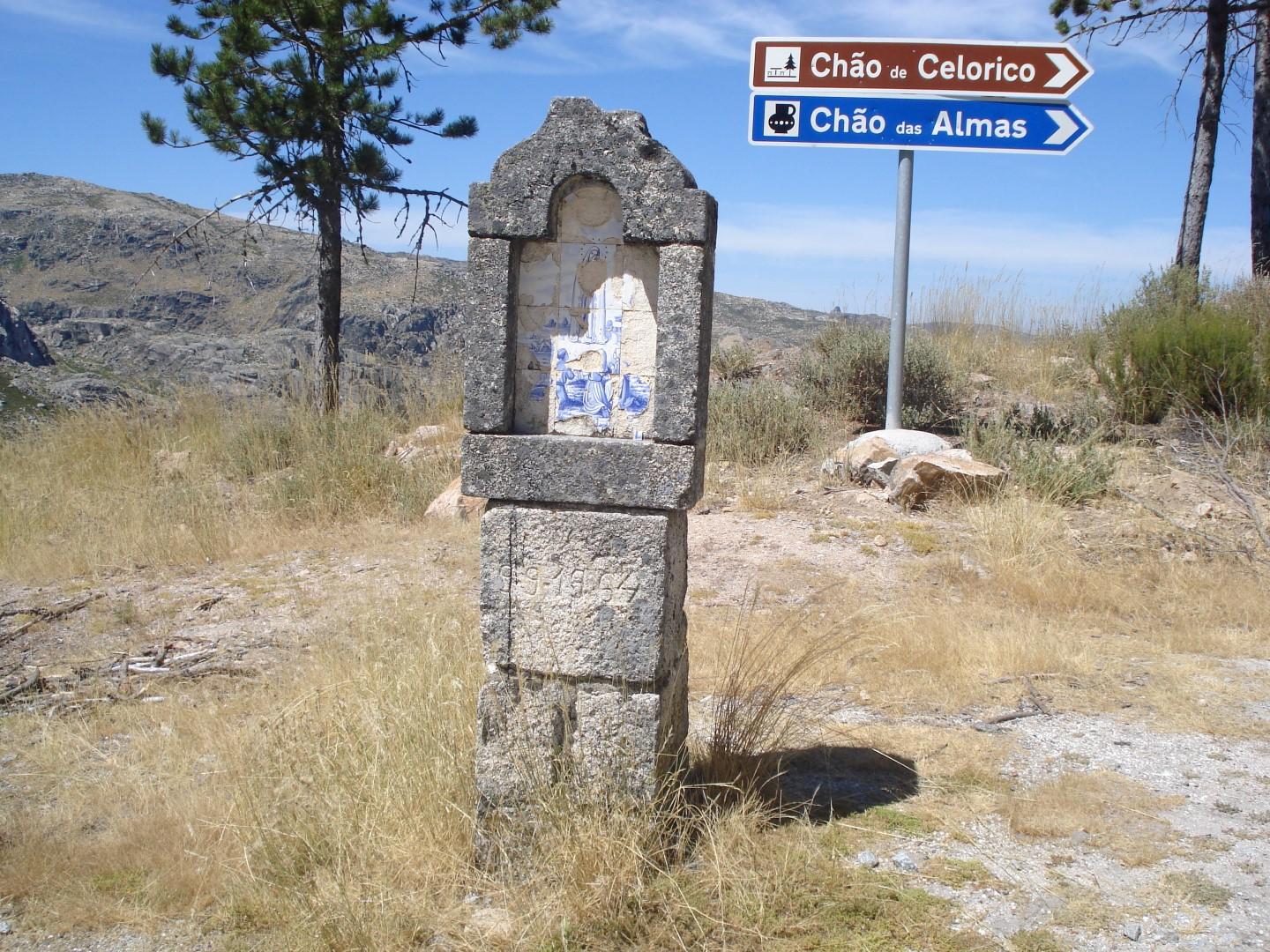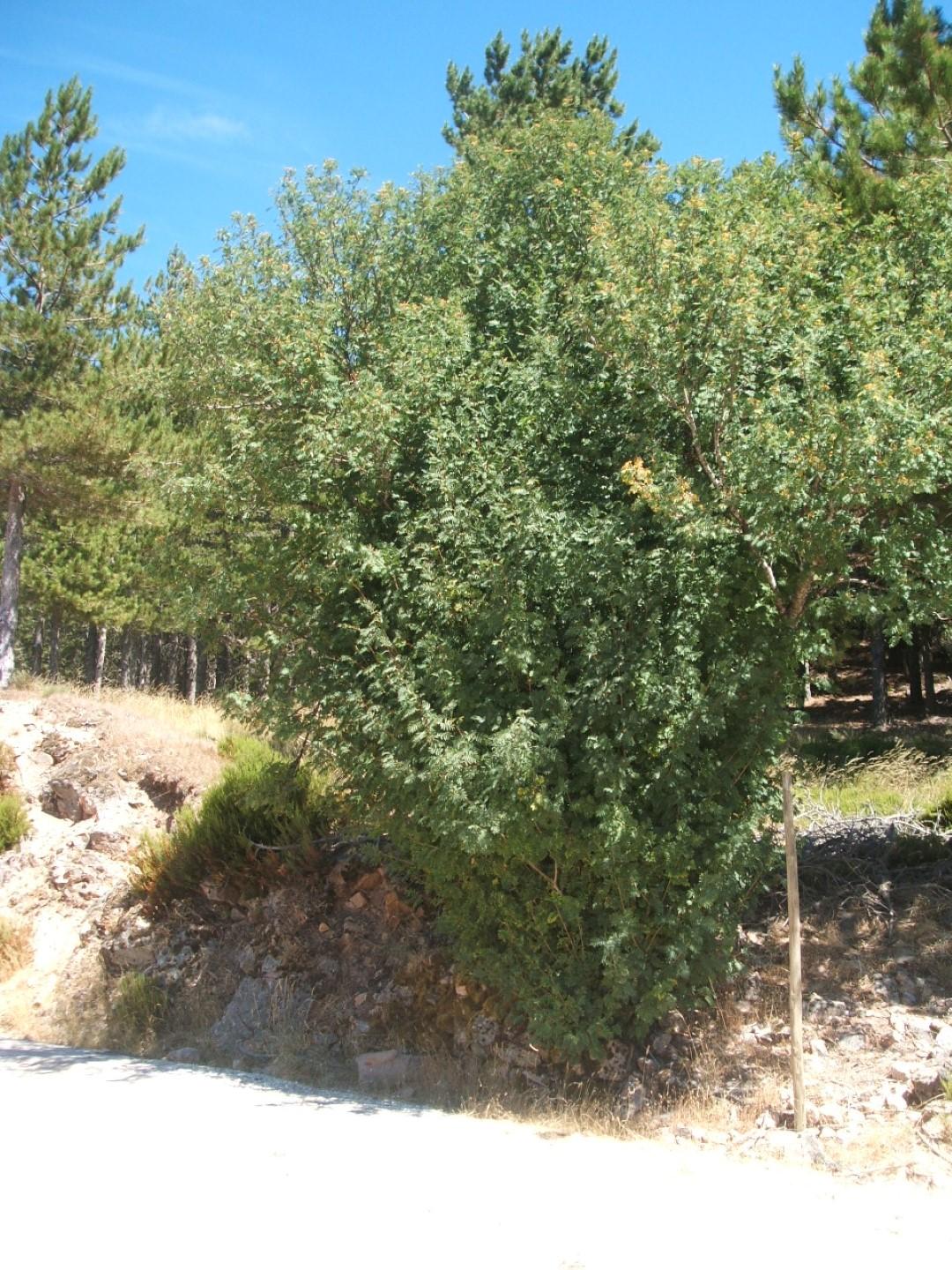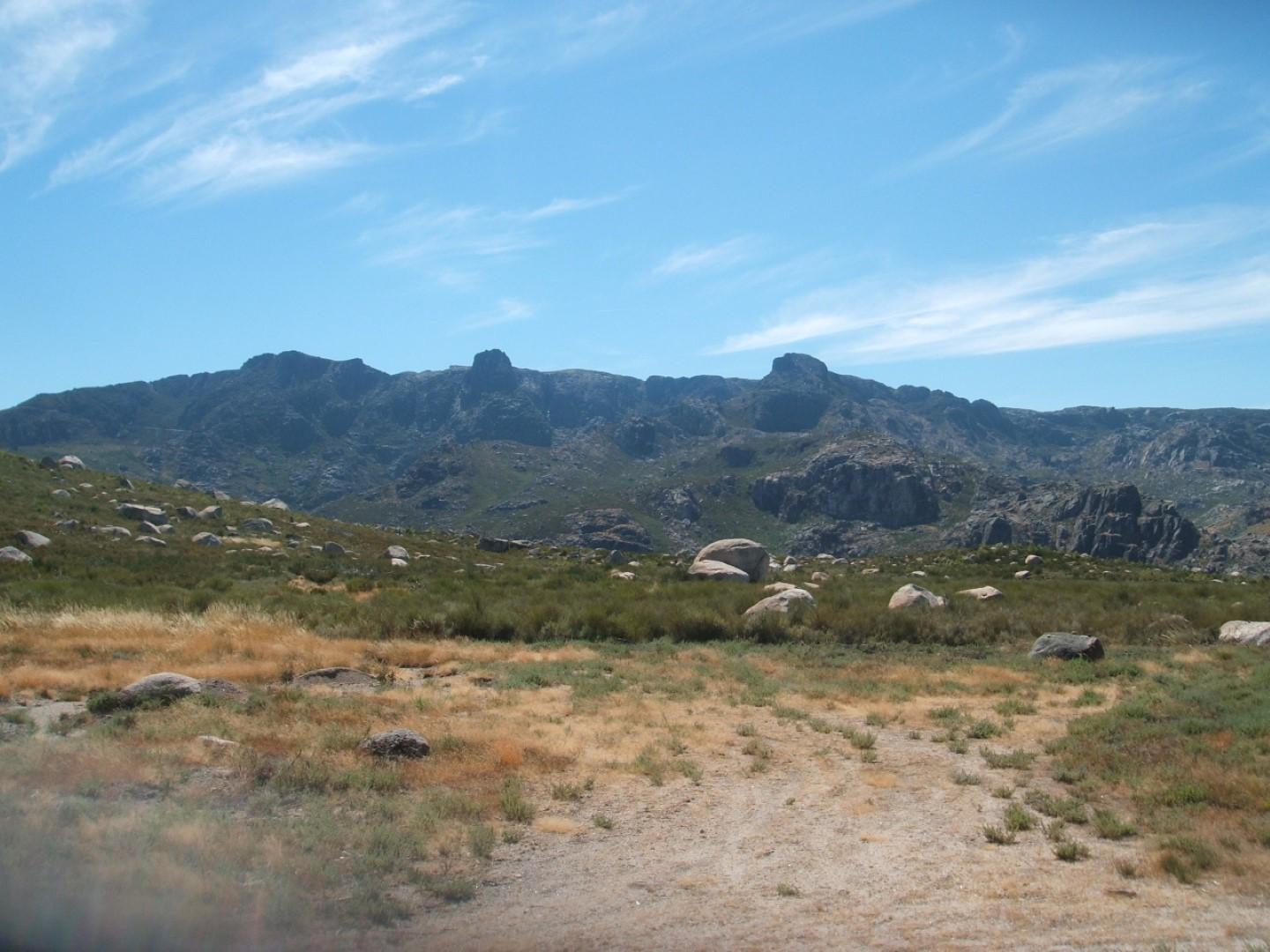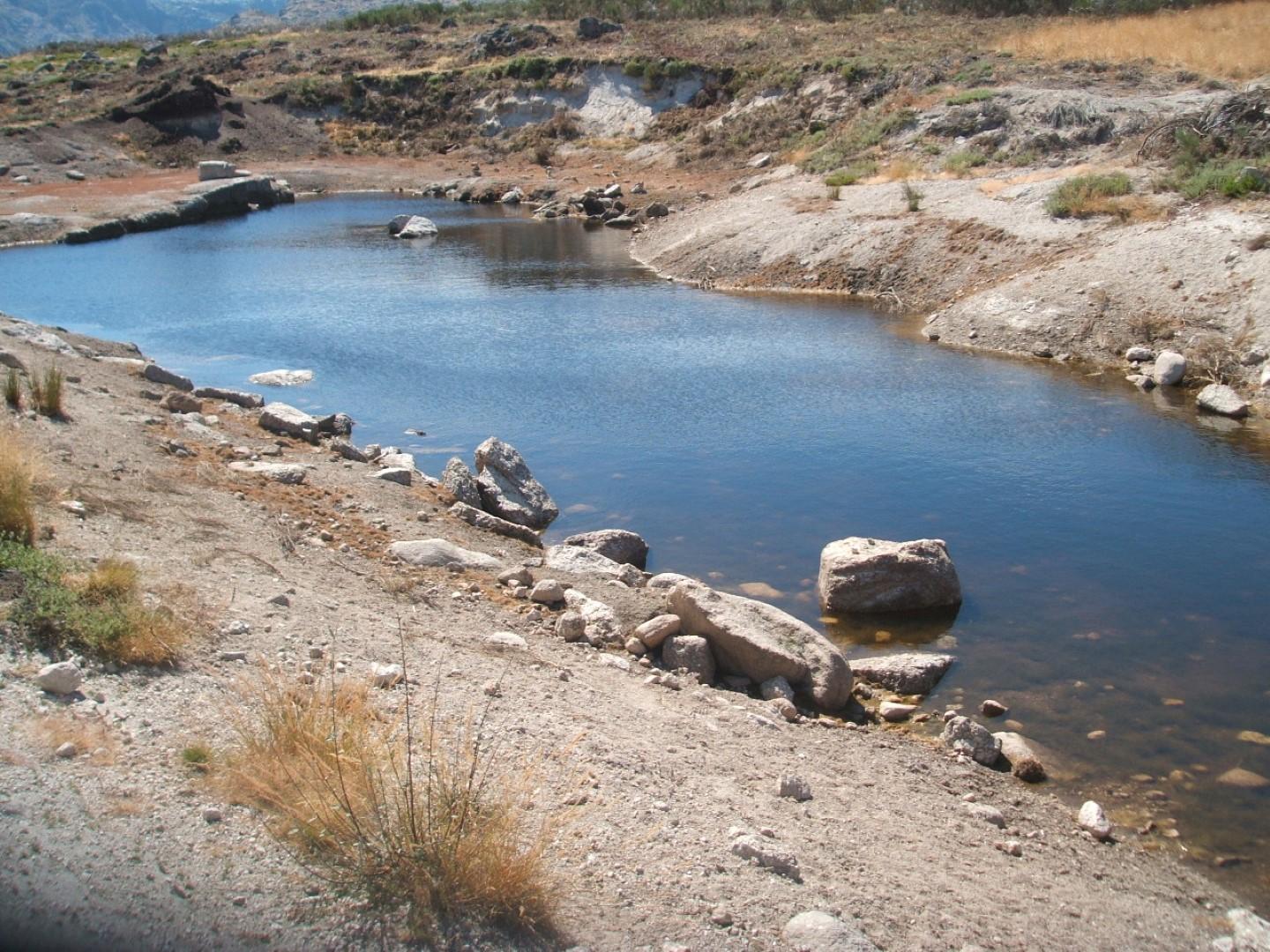
Starting point: between Covão d’Ametade and Nave de Santo António, at the intersection to Serra de Baixo.
The Poios Brancos Route owes its name to the fact of crossing, in the highest point, granitic aggregation of Poios Brancos, which in the first snow of the year dresses white, giving a clear sign to the Manteigas population that the winter has arrived.
The Poios Brancos correspond to a Tor – typical granitic form of blocks that accumulate, respecting the granitic joints system. In this location you can find the “Viriato” chair, like a real throne made by nature hands.
The intrinsic characteristics of granite confers to the landscape of Mountain Star unique peculiarities, as if there had passed the human hand “fixing” the stones that stand out proud into the sky.
The Saint Anthony Nave, or “Argenteira”, plays an important ecological function, regulating the absorption and gradual release of the water by the cervum – herbaceous plant which is also an important resource for cattle. On this site you will find a fountain and a building used by shepherds as a shelter place.
“On the top of this mountain graze more than twelve thousand sheep since spring, those come from Alentejo, where are going to have the winter, until the Autumn, when they return so that so large number of cattle miss by all this time grazing, because they own the populated Mountain in the most excessive abundance, in such way, that only a grass close to the Saint Anthony of “Argenteira” Chapel, reported above, called by this reason Saint Anthony Nave, by all this account time graze more than five hundred sheep’s not feeling at the same time no lack of graze. And if it tells that the grazes are so pure, that not only feed the cattle, but also medicine to cure the diseases of those who are, that fade away with the use of those grazes. There is also in this mountain breeding of wolves, foxes, rabbits, partridges and Royal Eagles, that live in the high rocks.”Priest Manuel Cabral de Pina (XVIII century).
Yet, in the natural landscape emerges the Covão d’Ametade, depression of glaciar origin, which lies downstream of the High Covão, once a cervum graze, that was planted with birches along the banks of the river Zêzere.
In the derivation to the Inferno Well Route comes the magnificent landscape of the Bee Covão, where can be seen from the bottom of the canyon, at the confluence of two water lines that give origin to the “Beijames” stream, the “Aguilhão” – considerable massif rock that overlap one another’s. The water flows calmly, pure and Cristal, among overlooking slopes covered with gravel.
The Yew, common juniper, birch, the wild apple tree, rowan, the cranberry and the water bean, are some species examples that can be found in this route.
The Bonelli’s eagle, rufous-tailed rock thrush and the pilgrim falcon are the birds that face a very high level of extinction. The Pyrenean desman, Iberian rock lizard, snub-nosed viper are also present.
- Route PR7MTG
-
- Name: Rota dos Poios Brancos
- Type: Circular
- Coordinates of the beginning W: 7º34'14.01"W 40º19'36.26"N
- Height at the beginning: 1520 m
- Minimum height: 1440 m
- Maximum height: 1680 m
- Advised direction: Clock hands
- Difficulty: Average
- Extension: 7,9 km | 25,4 km (with leads)
- BTT: Yes
- Useful Documents



